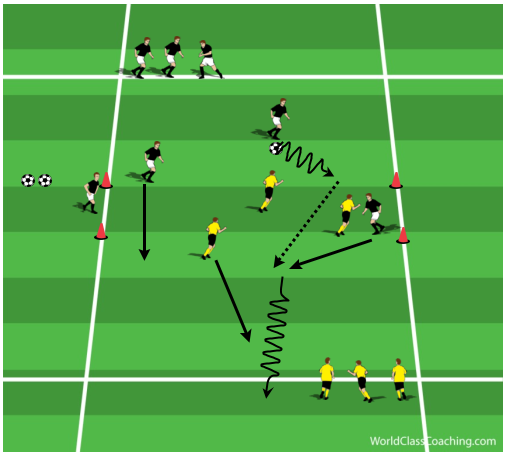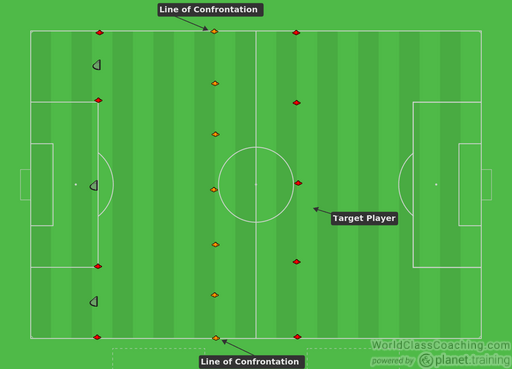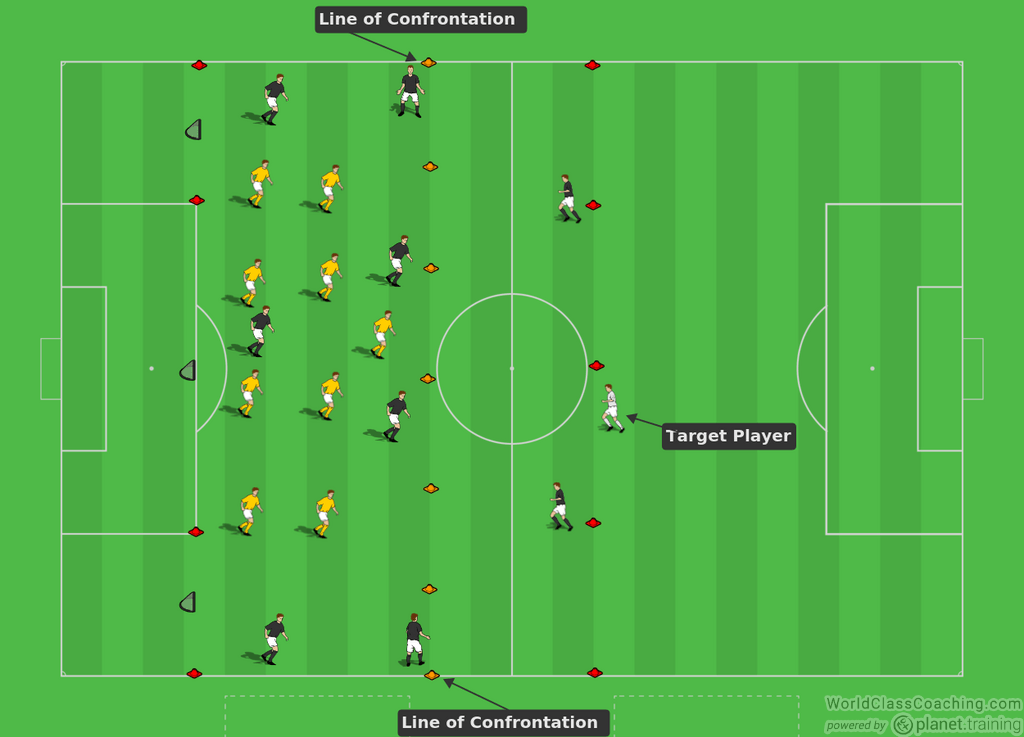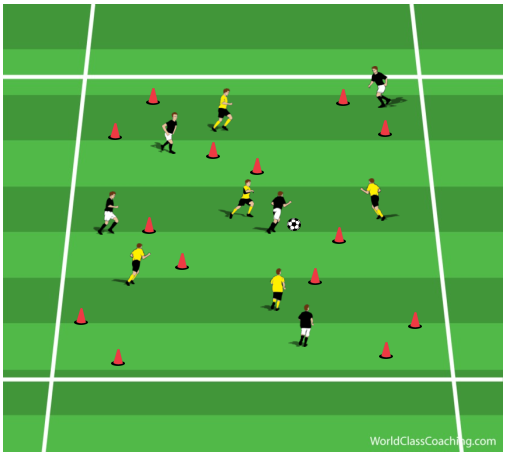- You are here:
- Home »
- power
Tag Archives for " power "

Defend in a Deep Lying Block Defense – Aerobic Power
By Anthony Hazelwood
Defend in a Deep Lying Block Defense – Aerobic Power. Defend in a Deep Lying Block Defense – Aerobic Power. The following activity coaches a team to defend in a deep lying block defense. The specific fitness target is transient endurance while adapting the player’s aerobic power in an extended small-sided format.
When preparing the activity, if needed, concentration and difficulty levels may be increased by having players execute something extra unique by setting more restrictions. Every activity may be modified, and it is up to the coach to be creative. However, it is important to respect the parameters of the exercise time, the rest, the types of actions used and the weekly periodization of the activity.
Additionally, it is beneficial to train a soccer team and its players with all the elements of the game being present in the session. By doing so, it will promote soccer specific adaptations to the player’s body, mind and emotional triad. Ultimately, these adjustments will enhance their real-time game performances on a physical, emotional, conscious, and subconscious mental level.
Area Size: 50 yds. Length X 60 yds. Width
Total Activity Time: 20 Minutes.
Sets: 1.
Intervals: 3. Activity Time: 6 minutes.
Recovery Interval Time between Sets: 1 minute.
Intensity: High.
Objectives:
• Tactical: Defend as a team in a deep lying block defense. Defensive individual, small group and team collective defending principles of play.
• Fitness: Aerobic Power. Ability to play through three repetitions at a high rate.
• Technique: Proper fitness and off/on the ball execution/techniques.
• Mental-Emotional: Players fully engaged and concentration is high.
• Concentration Level: High.
Setup:

• Yellow team (4-4-1) trains to defend in a low-lying compact box shape.
• There are three goals (6 yds.) placed at the yellow teams end line.
• A Target player is located at the black team’s end line and may only run side to side on the line.
• A line of confrontation is located 30 yds. from the yellow teams end line.
• Yellow team may not defend beyond the line of confrontation.
• Black team (4-2-3) starts with the ball and looks to score through one of the three goals by either passing or dribbling through it.

• Yellow team looks to defend the three goals.
• If the defending yellow team wins back the ball, they look to transition into attack and find the target player. They may go beyond their line of confrontation when in possession.
• Once they find the target player, the teams quickly recover below the line of confrontation and begins to defend again.
• Target player plays with black team during possession and is available to receive passes from yellow team when they are in possession.
Coaching Points:
• Defending team works collectively to protect three goals.
• Collective shifting and understanding of roles in zones.
• Pressure, Cover and Balance concepts.
• Team yellow recovers into a deep lying defensive shape after a turn over to the Target player or when taken away by the defending team.
By Anthony Hazelwood
Current Seattle Sounders Academy Performance Coach with previous European academy coaching experience as an assistant fitness and strength/conditioning soccer coach with Levante U.D. (2013-2014) and Getafe SAD CF (2015-2016) in Valencia and Madrid, Spain respectively. A USSF “A” licensed coach with a BSc in Physical Education and an MSc in Sports Training and Nutrition.
Possession Game to Develop Aerobic Power
By Alex Trukan
The following practice is aimed at developing the ability to sustain many actions throughout the whole match. In example, that will enable players to produce the same amount of sprints in the first as well as last 15 minutes of the game. In addition, that is achieved in possession game, what increases the motivation of the players and links physical focus with technical and tactical content.
Set up and directions:
Set up a square of 30-40 m. depending on the ability as well as number of players. Organise min. 6 little gates in the middle of the square as shown on the diagram. Divide the group into two teams of 5 players. To score a point, a team should pass the ball through a small gate. The team with more points wins the game.
Method of scoring points in this exercise requires constant support in front and in behind the ball. After single point is scored, the gameContinue reading

